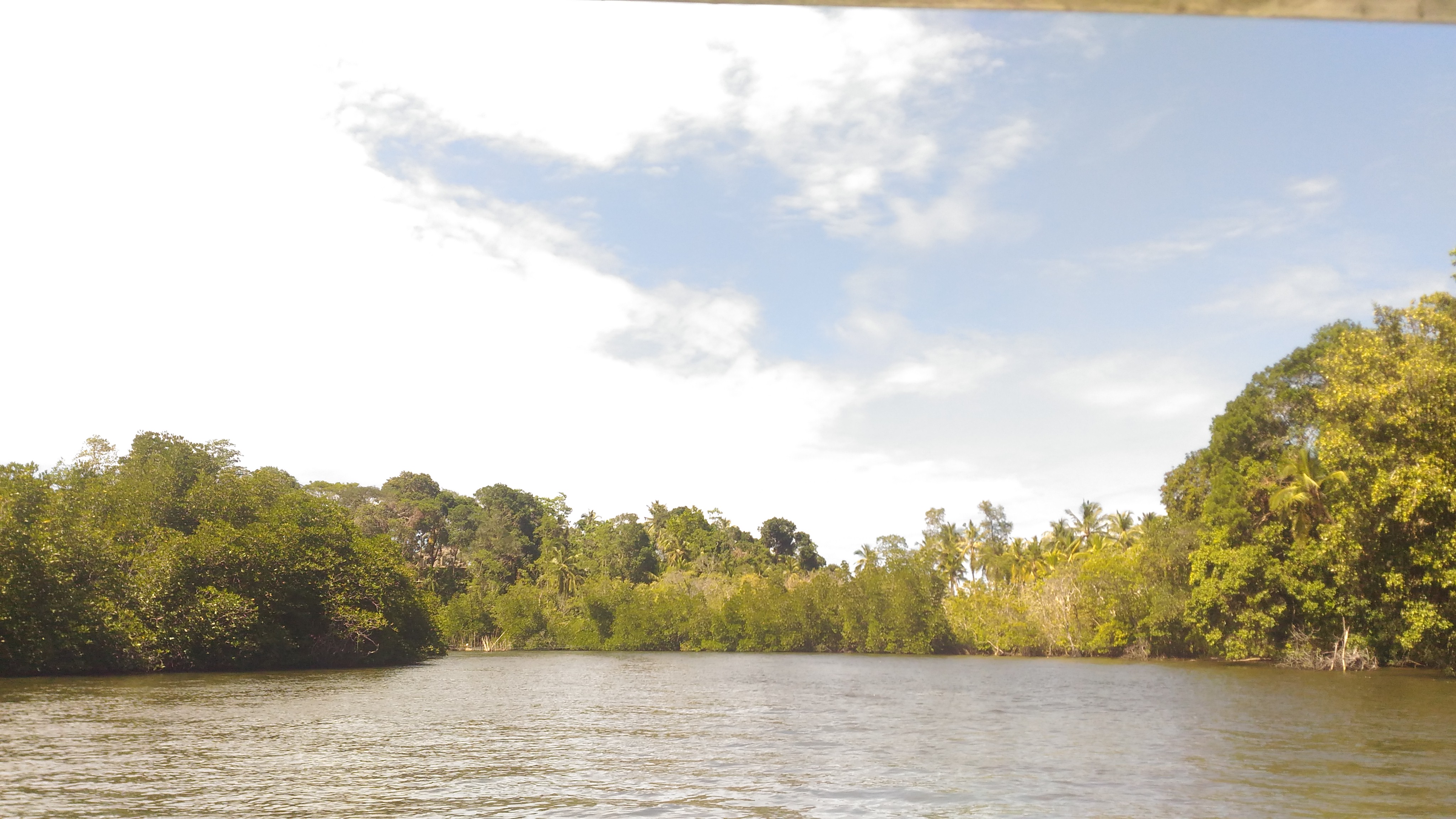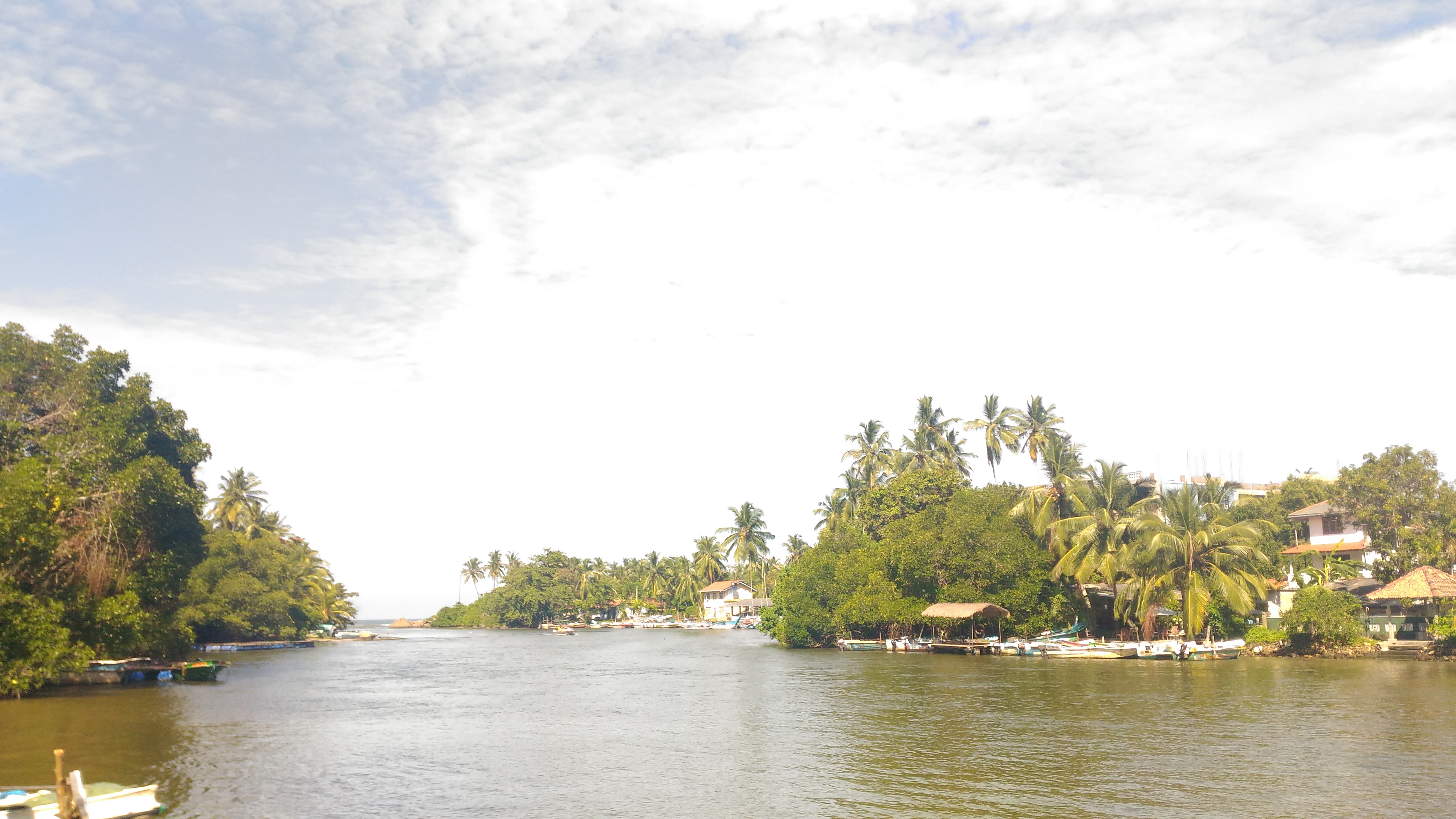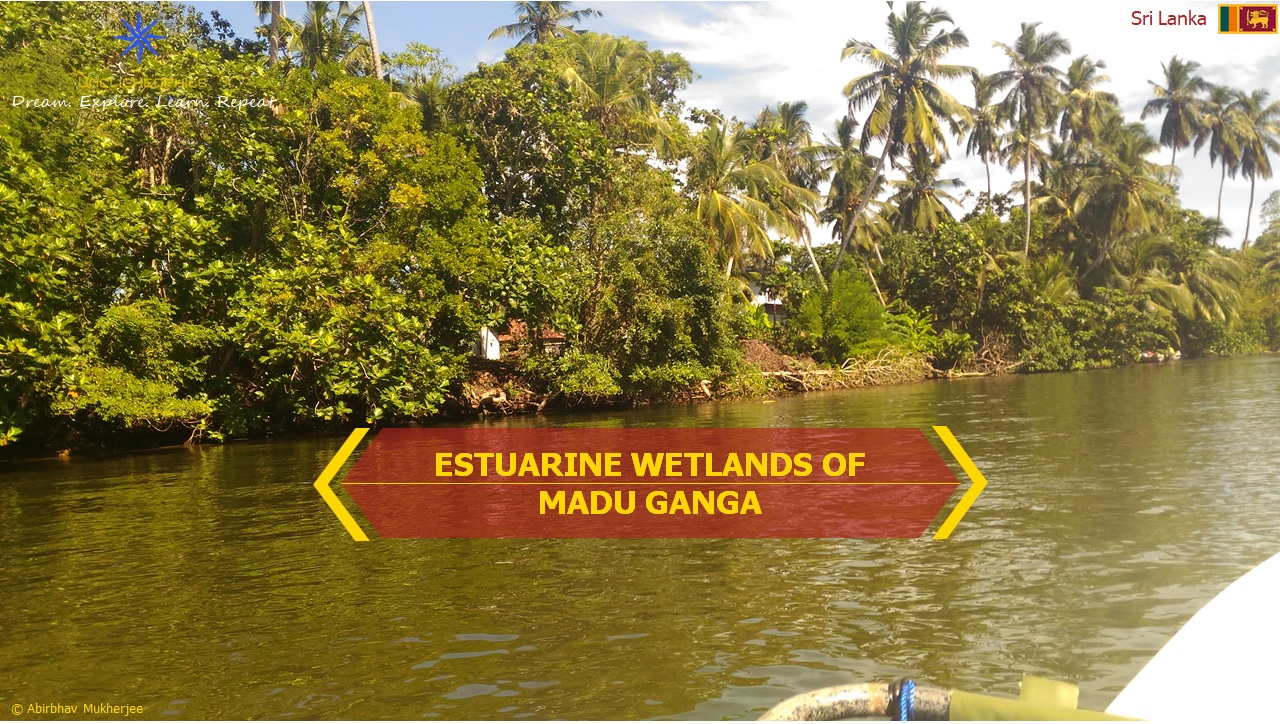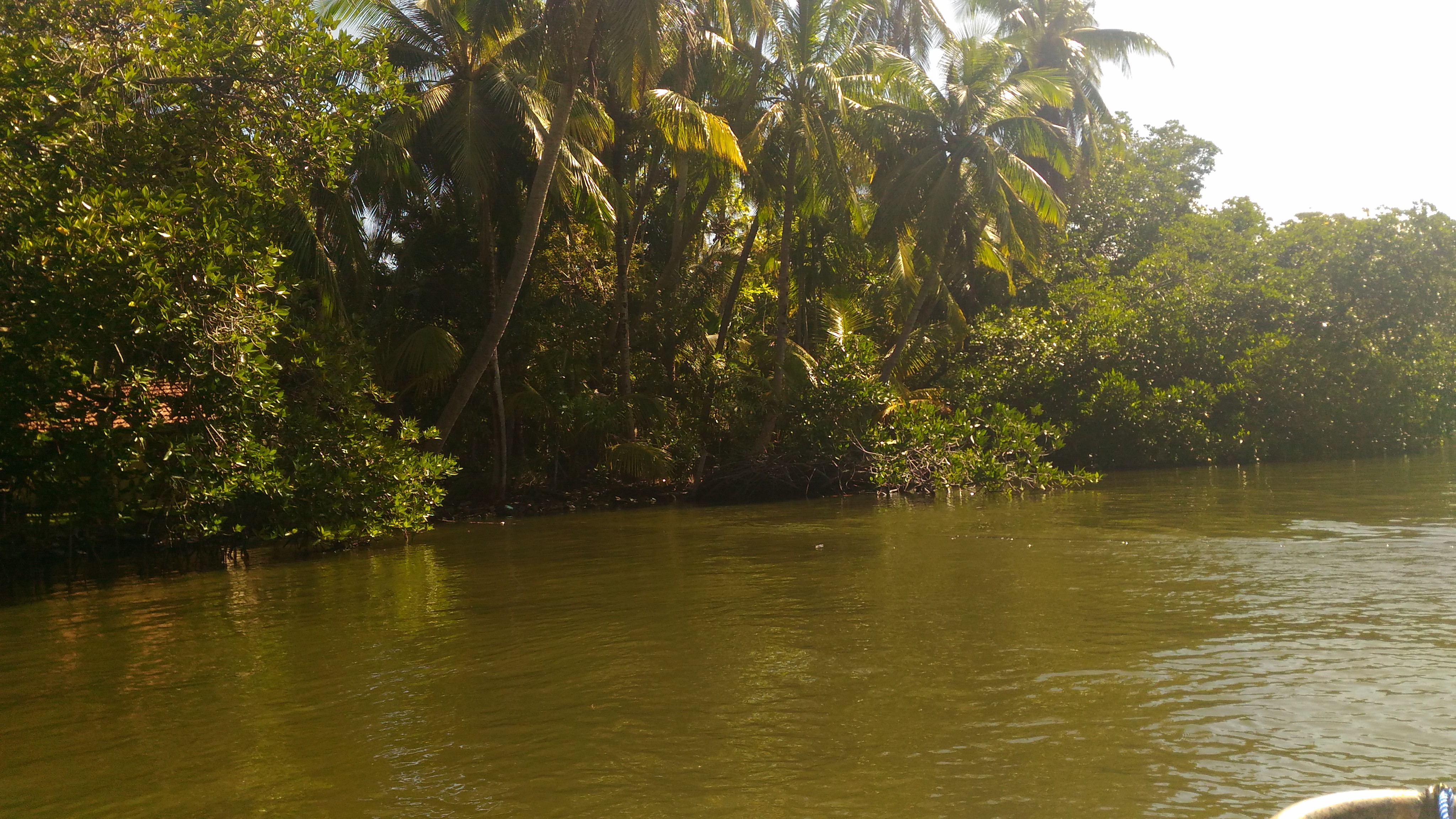For many of us, water simply flows from a faucet, and we think little about it beyond this point of contact. We have lost a sense of respect for the wild river, for the complex workings of a wetland, for the intricate web of life that water supports.
Sandra Postel, Director & Founder of Global Water Policy Project
Wetlands are ecosystems characterized by the inundation of stagnant water or meandering rivers or sea, on a seasonal or perennial basis. Wetlands are usually very fragile ecosystems and are home to thousands of species of flora and fauna which thrive on such environments, and can sometimes be endemic to that particular area. Wetlands play a significant role in influencing the climate of the surrounding areas.
A type of wetlands, categorized as Ramsar Wetlands (defined under Ramsar Convention of the United Nations) are wetlands designated to be of International importance, necessitating efforts towards their conservation.
I got an opportunity to visit a Ramsar Wetland in the estuarine belt of Madu Ganga river in Balapitiya, near Galle. It was undertaken as a part of my visit to Sri Lanka as an Indian Youth Delegation member.

Prima facie, a wetland might not be much appealing a destination to both adventure seekers and normal tourists alike, because these places usually don’t offer anything substantial adrenaline pumping adventurous hikes or cliche selfie spots.
However, that should not be a deterrent to a traveler. If one wants to appreciate the beauty of nature manifested in a medley of water and forest, then a wetland is a recommended place to be in. And who knows, one might end up learning or exploring a thing or two?
Hence, going ahead with the “Quest for the Uncliche”, let’s try and know more about the natural gem of a place called the Madu Ganga Wetlands of Sri Lanka.
What
The UNESCO designated Ramsar Wetlands of Madu Ganga is an estuarine area of the Madu Ganga river in Sri Lanka. It is a complex coastal ecosystem with a very high ecological and biological significance.
The Madu Ganga river in its estuary has dense mangrove forests and scattered islands, all covering about 150 acres of area. Several endemic species of plants and animals live in this fragile ecosystem.
Our trip consisted of a river safari through the wetlands and stopping by a few islands, which I shall reveal in the subsequent sections. The safari was in itself a beautiful and enriching experience altogether, with each turn full of natural beauty and the delicate balance nature maintains in this complex ecosystem.
Where
One can reach Balapitiya (the town from where the estuary is accessible) from either Galle (50 km) or Colombo (80 km). Balapitiya is quite well connected via roads to both these two major cities in Sri Lanka.

When
I visited the Madu Ganga Wetlands during my visit to Sri Lanka as a Member of the Indian Youth Delegation. The Delegation’s visit lasted from December 16, 2017 to December 24, 2017.
To know more about the Indian Youth Delegation, click here.
Why

The Madu Ganga wetlands are a paradise for wildlife conservationists, environmentalists and nature lovers who can spend a day or two here. There are a variety of species of reptiles, amphibians, butterflies, birds, fish, molluscs and primates inhabiting the estuary, the forests and the islands.
Our packed schedule was a bit of a roadblock as far as a thorough exploration of this place is concerned. Despite that, we were able to capture some breathtaking sights of sailing beneath the canopy of dense mangrove forests, sometimes even beneath their roots.
(L): A Glimpse of the river safari on boats

Aquatic pathways beneath the roots of the mangrove trees 
Boat Ride beneath the roots of the mangrove trees
In addition to the boat excursion, we visited a peculiar island in this estuary. It’s called the Cinnamon Island.
I should say the fragrance of that place is quite worthy of it’s reputation. We were welcomed by a strong, pleasant and unmistakable smell of cinnamon upon landing in that island.

It might be noted that Sri Lanka is one of the World’s Largest producer and exporter of cinnamon. The Sri Lankan cinnamon is a globally acclaimed variant of cinnamon.
Cinnamon is a well known natural flavouring agent on account of its strong aroma. It was expensive and was considered a luxury item in ancient Greece and Eqypt, fit as an offering to Gods or the aristocrats. Cinnamon also finds it’s use in some traditional medicines as a digestive aid.
It was a unique experience to visit the Cinnamon Island and closely observe how cinnamon is cultivated, processed and made into rolls which are sold abroad, subsequently finding their way to our kitchens. Every bit of these processes, from collection of the bark to making the rolls for sale, was done manually by farmers, without involving any machinery or chemicals for any of the processes. Perhaps the hard work put forth without use of chemicals is one of the reasons why Sri Lankan cinnamon is prized globally.
We also saw the making of Cinnamon Oil in this island, which was again a manual and chemical free process. Cinnamon oil finds its use in aromatherapy. It also has anti-bacterial properties, making it effective against certain types of bacteria.
In addition to a visit to the Cinnamon Island, we also went for a fish spa where small fish (maybe Kraal) are kept in their semi-natural environment. The tourists dip their feet in water and have these fish nibble their feet. Many tourists find relaxation in this procedure. I however refrained from this activity since I don’t trust any animal (other than cats)..!!
A few TIPS for people interested in purchasing cinnamon rolls from Madu Ganga Estuary area:
- Please have some local currency (Sri Lankan Rupees or LKR) with you as these places don’t support cashless payment facilities yet.
- Carry some rigid air tight containers with yourself to store the cinnamon rolls and prevent them from getting broken or damaged due to mechanical shocks
Until Next Time
The natural ecosystems on Planet Earth play a crucial role towards maintaining and sustaining living organisms, influencing climates and maintaining the balance of nature. Such ecosystems are no doubt very fragile, and an unsustainable exploitation of their resources can create a havoc for such environments and the Planet as a whole.
As highlighted in the quote of Sandra Postel, a renowned US based researcher, we need to understand the complicated flow of resources, food and the dependency of each creature over the others in these complex wetlands. Perhaps then, we will be able to understand the need of the species on earth and help better in conservation of the same.
As stated earlier, the Madu Ganga Estuarine Wetlands is a complex ecosystem spread out over a large area. The local people and the Government seem to be serious in keeping the area clean and devoid of unsustainable human interference. Hence, tourists should also do their bit towards the conservation of such places by not feeding animals, not littering around, eliminating the use of plastic, promoting local eco-friendly economic practices etc. A traveler interested in thoroughly exploring the area should be ready to spend a minimum of two days in this area.
Sri Lanka is blessed with a rich cultural heritage, in addition to possessing such gems of Nature. The Indian Youth Delegation gave me an opportunity to experience a few of the immense cultural and natural richness of Sri Lanka.
I shall be posting a few more articles about the same in the coming weeks. You can also go through some of my previous articles on Sri Lanka and share your comments..!!
Stay tuned..!!
© Abirbhav Mukherjee. All the pictures / videos posted in this article are my own unless otherwise mentioned.





Next time I go I will write a post on the garden and share the pictures of those ‘live’ trees🙂
LikeLiked by 1 person
Thank you so much, Madam.. ☺️☺️
It will be a great experience to see the live spice trees and fruits.. I never saw them for real and thanks to you, I shall see them virtually.. ☺️ Awaiting the “spicy” treat from you.
LikeLike
Madu Ganga sounds like a exotic place to explore. We didn’t travel South but I suppose I will…next time. I cant imagine being greeted by the natural smell of cinnamon. Sounds delicious. In Munnar, you get the smell of cardamom. Its lovely. We have a few cinnamon trees in our garden in Kerala but not enough to overpower the fragrance of the jackfruit trees🙂. Really enjoyed reading this post.
LikeLiked by 1 person
Wow.. You seem to have several spice plants or trees in your garden.. Pepper, Cardamom and now Cinnamon.. Amazing.. ☺️☺️ Now you are the one who is giving “spice shocks” to me 😂
Madu Ganga estuary is indeed an exotic place.. Try staying there for 2 days atleast to get a flavour of Nature and Mangroves.. ☺️
I shall try checking out the cardamom gardens of Munnar as well.. ☺️☺️ Thank you Madam for your tips..!!
LikeLike
Not in mine. My father-in-law’s. Its Kerala. You drop a seed, it grows!🙂
Are there places to stay there? That sounds fun. Will add it to my itinerary. Thanks for the tip.
LikeLiked by 1 person
Amazing, Madam.. ☺️☺️ The spices we use in our kitchens are the dried ones.. Cannot fathom how the real ones, plucked from the trees would look like – the fruits, flowers, seeds….. I am sure they will look and feel amazing.. ☺️☺️
Balapitiya does have a few resorts to stay. You can easily find them on the internet. Some of them can offer a bundled excursion to the Mangrove forests and a few peculiar islands like the Cinnamon Island.. Hope you have fun exploring that place.. ☺️☺️ You are always welcome, Madam..!!
LikeLiked by 1 person
È la parte del paese che non conosco e per cui tornerei volentieri in Sri Lanka, una terra meravigliosa!
LikeLiked by 1 person
Sono contento che ti sia piaciuta questa parte dello Sri Lanka e che valuteresti di rivisitare il paese ..
Spero che visiterai di nuovo lo Sri Lanka. L’India non è lontana dallo Sri Lanka.. 😊😊
LikeLiked by 1 person
Sarebbe una buona occasione per incontrarci!
LikeLiked by 1 person
Sicuramente Benedetta. Mi piacerebbe incontrarmi.
Spero che visiterai presto questa parte del mondo.. 😊😊
Saluti..!!
LikeLiked by 1 person
This looks like a beautiful place. I wish we had visited when we were in Galle. I can imagine how lovely it must have been to be greeted with the fragrance of cinnamon—one of my favourite spices. Until our trip to Sri Lanka where I saw cinnamon trees at a tea plantation, also near Galle, I didn’t know that cinnamon is made from the bark of the tree. Interesting post!
LikeLiked by 1 person
It’s nice to know that you got acquainted with the Cinnamon Trees in Sri Lanka, albeit briefly. Isn’t its fragrance heavenly? I share the same enthusiasm and fondness to that aroma when I set foot (rather before) on the Cinnamon Island.. 😊😊
I would urge you to pay a visit to Madu Ganga Estuary and make sure to visit the Cinnamon Island. You will be surprised to see the range of organically grown, man made authentic Sri Lankan cinnamon products right in front of your eyes..!! ❤ 😊
Thank you Madam for your lovely comments.. 😊😊
LikeLike
Absolutely gorgeous!!! 😍 My soul is lost in these wonderful places,I would like visit!!! 🥰
LikeLiked by 1 person
This is a natural beauty and a must visit place.. 😊😊 You won’t regret the magic nature can show in places like these.. 😊
Thank you once again Madam for your lovely comments.. 😊🤗
LikeLiked by 1 person
Beautiful photos of a gorgeous area!
LikeLiked by 1 person
Thank you Nilla for “sailing” through my posts and leaving your comments.. 😊😊
Exactly, so beautiful and green area, isn’t it? I am sure you will enjoy sailing and island hopping in this place..!!
LikeLiked by 1 person
I have friends that still live on their boats and have sailed to Sri Lanka, but sadly, I don’t own a boat anymore…never say never. 😉
LikeLiked by 1 person
Well, you don’t own one right now, but I am sure you can build one or own one some time down the line.. 😊
When you do, remember Sri Lanka and India are close by.. 😉
LikeLiked by 1 person
wonderful pictures and post
LikeLiked by 1 person
Thank you Madam for reading the post and sharing your comments.. 😊😊 Glad you liked the pictures and the place..!!
LikeLiked by 1 person
Lovely photos and places, thank you for sharing them! 🙂
LikeLiked by 1 person
Thank you Madam for reading the post and sharing your comments.. ☺️ Glad to know you liked the photos and the place.. ☺️
LikeLiked by 1 person
I get giddy imagining the plenitude of birds in this amazing ecosystem! 🙂
LikeLiked by 1 person
Absolutely. So many birds are there to see and study.. ☺️ I am sure you will love that..!!
Thank you Madam for sharing your comments.. ☺️
LikeLiked by 1 person
🦅🦉🦆😊
LikeLiked by 1 person
This is most inviting, the pictures and the descriptions. Your posts are always very informative and friendly. It’s always so amazing to visit new places and enjoy their natural habitat and culture. I enjoyed reading!
LikeLiked by 1 person
Thank you so much Madam for your appreciation and reading my posts in detail.. 🙂 🙂 Highly appreciate that..!!
Hope these help you plan and pay a visit to such places. Reading about them is good, but experiencing them physically is something beyond words..!! 🙂
LikeLiked by 1 person
Exactly. Experiencing the places physically is amazing!! I really want to visit the whole world and experience the places and culture. It’s a pleasure reading. I found many of your posts are about historical sites, and I am interested. I would read them with time.
LikeLiked by 1 person
Thank you so much Madam for taking out the time to read my posts.. 🙂 Your expert reviews are always welcome.. Hope to learn more from a History expert herself.. 🙂
LikeLiked by 1 person
First, don’t call me madam, I am so much younger than you 😂 and secondly, I am no history expert!! 😂😂
LikeLiked by 1 person
Lol.. I didn’t know that.. 😛 OK, “no Madam”.. 😛
LikeLiked by 1 person
Yes. Call me Ramyani 😂
LikeLiked by 1 person
Sure.. It’s a pleasure meeting you Ramyani.. 🙂
LikeLiked by 1 person
Love the photos, especially the cinnamon trees. Thank-you for bringing awareness about fragile eco-systems. 🙂
LikeLiked by 1 person
Thank you so much Madam for visiting and sharing your thoughts.. 🙂 Glad you liked the post and the photographs..!!
True, these natural ecosystems are quite fragile, and we should all play our part in preserving them..!!
LikeLiked by 1 person
Yes we should. I think the pandamic has been an eye opener to some. It has been for me and I am changing some things about the way that I live to be more supporting to the earth.
LikeLiked by 1 person
Well, for me it was and still is Global Warming. We should not need tragic and unwanted events like pandemics to teach the basics. There are many ways by which we can be environmentally friendly. The Best method is by planting and growing trees if we have land, or donating to people who will take it forward.
LikeLike
I just loved the cinnamon tree and the sapling too. You are really lucky to witness such beauty. Eager to see your future posts.
LikeLiked by 2 people
Thank you so much for sharing your thoughts.. ☺️
Glad you liked the place, specially the Cinnamon Trees and saplings.. ☺️ It’s really an amazing place.. Thank you for your words of encouragement.. ☺️
LikeLiked by 1 person
You’re most welcome.
Yes, I did.
Anytime.
Keep exploring but for now being inside ‘ll be good. Be safe.😊✌
LikeLiked by 1 person
Yes, of course, I am staying indoors only as of now. Hopefully by April 30, 2020, the menace of lockdowns and travel restrictions will end and explorations will restart.. ☺️
Thank you once again and you too stay safe by staying indoors and taking other prescribed precautions.. ☺️
LikeLiked by 1 person
That’s good to hear.
My pleasure.
Have a good night.✌
LikeLiked by 1 person
Good night to you as well.. ☺️
LikeLiked by 1 person
Beautifull
LikeLiked by 2 people
Indeed Madam, this place is so beautiful.. ☺️
Thank you for reading it and sharing your comment.. ☺️
LikeLiked by 1 person
I liked to visit all! ☺️
LikeLiked by 1 person
Great post!! Looks like a lot of fun!
LikeLiked by 2 people
Thank you so much Madam.. 😊 Indeed, it was fun.. 😊
Request you to check out another post in this series. It contains some Historical treatment and glimpses of a Civilization.. 😉
LikeLiked by 1 person
I will do!!!
LikeLiked by 1 person
Hope you will find it good.. 😊 Request your feedback as well.. 😊
LikeLiked by 1 person
This posts brings back memories for me. When I was in Hikkaduwa in 2014, I went on a tour of the Madu Ganga river. It was fabulous. We saw many animals and birds along the way. It’s such a beautiful place 🙂
LikeLiked by 2 people
Wow.. That’s interesting.. ☺️ I am glad that you enjoyed your trip to Madu Ganga river and could relate to this post.. ☺️
Sri Lanka is no doubt a fabulous place – clean and rich in beautiful landscapes.. ☺️
Thank you Madam for stopping by and sharing your comment.. ☺️ Shall read more about your trip to Sri Lanka.
LikeLiked by 1 person
Excellent travelogue!
LikeLiked by 2 people
Thank you so much Madam..!! Glad you liked it.. 🙂
LikeLike
Calm waters offer mystery or healing when one knows how to look closely. I would enjoy paddling along these waters in a kayak.
LikeLiked by 2 people
I believe kayaking is something the authorities won’t allow because the area might contain crocodile, snake or alligator populations. Other than that, a motor boat will do just fine.. ☺️
I am sure you will love the beauty of the mangrove forests over there.. ☺️ and spice your trip up with a visit to some Cinnamon Forests..!!
Thank you Madam for your visit and your comments.. ☺️
LikeLiked by 1 person
Wonderful article yet again. I am sure you had a great time Island Hopping (which I am sure will be revealed in next post). Those wetlands seems to be a photographer’s paradise. I would love to spend a couple of days. Aah..I can imagine, what would be the aroma when you landed in cinnamon island. Interesting! Awaiting your next posts.
LikeLiked by 2 people
Thank you so much Madam for reading my article and commenting.. 😊
Well, we didn’t have much time to spend over there in the Estuary, hence the island hopping activity was restricted to 2-3 islands only out of perhaps 10-20.
You must allocate atleast 2 days to this place to be able to thoroughly explore the same.. 😊 And yes, as you rightly pointed out, the fragrance of Cinnamon will be present everywhere within that island, or even at a significant distance away from the same.. 😊 Make sure you buy some great quality pure cinnamon from such places.. ☺️
It’s definitely a paradise for hardcore photographers and environmentalists.. ☺️ I am confident that you will like the place and the ambience of it.. ☺️
LikeLike